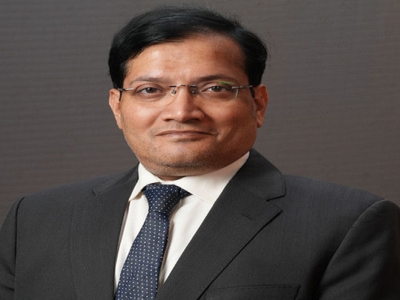Listen to this article
What has contributed to Emkay's growth to Rs.1500 crore AUM with 500 clients?
We have always done good work and clients have made money with us but over the last year, we've made ourselves more visible - showing that we are among those who give good returns to clients. Once that happened, we got traction in both our purpose and performance. We've always been in favour of the clients, giving them few reasons to complain. That's why the AUM has grown literally 100% from what it was in the year.
How do you read the current state of the equity market and where is it headed in the medium term?
We need to look back to when we started this journey post-2020 pandemic. The government provided substantial stimulus, which led to the household sector becoming leveraged. This drove spending on automobiles, personal loans and discretionary items. Travel and holidays went up and consumption increased. The government also reduced corporate tax, which meant the corporate private sector had a lot of money as profits ballooned. There was hope that companies would start to invest and you saw the capital goods and industrial sector doing very well.
These trends continued until 2024, when our finance minister announced a return to fiscal discipline and plans to cut the fiscal deficit. Once that happened and RBI clamped down on unsecured credit, the household sector, which had been reaping the benefits of leverage for four years, suddenly felt squeezed.
The government's focus shifted from consumption-side stimulus to investment-side spending - rather than high food subsidies, they focused on creating multiplier effects through infrastructure - roads, railways, defence.
Currently, the market's lifeline is the SIP flows from retail investors. We haven't seen a market downturn since the pandemic - markets have only climbed higher, reaching 150% market cap to GDP.
The Nifty 50 has already fallen 7-8% from its peak, and while large caps won't see much more downdraft, mid and small caps are vulnerable. The mid-cap index could easily correct 10% from current levels, with individual stocks correcting even more. However, with 57 sectors in India now, the markets have become very broad. Money coming out of expensive sectors will likely move into cheaper or defensive sectors.
Areas that could attract flows include large cap banks (which are very cheap), IT (emerging from a cyclical downturn), pharmaceuticals (benefiting from both bio-secular trends and China plus one), and the capital market space (showing fantastic platform-driven numbers). The excesses are in industrials (over-dependent on government spending), real estate (where only the premium segment is selling), utilities, and renewables trading at fantabulous numbers.
Considering that equity PMS has recently gone under a hike in the taxation rate, how do you see debt becoming more attractive in the PMS space and what's your overall view of the taxation rate?
With low churn, you can essentially replicate the structure with tax advantages like a mutual fund. In my experience, alpha generation through low churn is the only real differentiator.
Regarding debt PMS specifically, it's generally out of focus. Investors typically don't come to a PMS platform for debt investments, except perhaps for private credit. PMS is generally seen as an equity-focused structure.
From what I understand, equity PMS and CAT III AIFs are pretty similar to mutual funds. What do you think is the advantage that PMS and AIFs offer?
In Category III AIFs, units are issued based on the NAV after tax adjustments, so new investors don't end up paying tax on profits made by previous investors. For example, in our Golden Decade AIF with a NAV of around 140, when the custodian provisions tax at 20% for a short term, after 15 days when the one-year period passes, it becomes 12.5%. So, a new investor today would get the 140 NAV portfolio at a discount of around 7.5%, meaning they get new units at roughly 132.
The choice often comes down to investor preferences - if you want minimal hassle with tax filing, choose AIF; if you want maximum transparency, choose PMS. The minimum ticket size is also different – Rs.50 lakh for PMS versus Rs.1 crore for AIFs. But ultimately, both structures are only as good as their fund manager.
How do you think the new asset class will affect PMS? We all know of the new asset class but how do you see PMS getting affected by it?
It would be another competing product to the PMS, which itself was facing a stagnating market. If you analyse the flows into the PMS platform, you don't have too much fresh inflows coming in. Now, you will have another competing product coming from the AMCs. You could have a long short option created within the PMS vehicle, which was not available in the current PMS scheme of things. You can't short the current PMS, but in this new product, you can have that option of shorting.
How do you see the wealth management industry evolving with increasing strategies?
The industry's size is definitely growing. When I began my career some 30 years ago, there were only 10 PMS providers in the entire industry. Today, there are over 500 PMS players. There's really no customer loyalty in this industry - a fund is only as good as your last day's performance.
However, the size of the industry will only get bigger, with product selection driven by customer risk appetite. The ultra HNI and HNI investors want to test and verify what you're claiming. We're also seeing a lot of family offices being set up, competing with PMS returns. The depth is becoming bigger, with alternates now reaching even Tier 2 towns and cities.
It's no longer just an urban phenomenon. As the economy grows and people diversify away from traditional assets like real estate and gold, this third asset class will gain more recognition.








